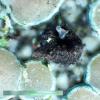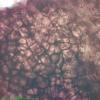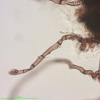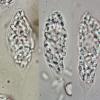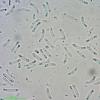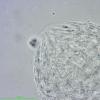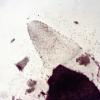
16-11-2025 21:09
 Robin Isaksson
Robin Isaksson
Anyone recognize this acc. to pictures.? Found on

18-11-2025 13:59
Nogueira HéctorNovember 14, 2025 Brazuelo (León) SPAIN Hymenosc

17-11-2025 19:14
herman lambertApothécie discoïde 0.6 cm diam., orangeFace hym�

17-11-2025 21:57
Philippe PELLICIERBonjour,Récolté sur bois de feuillu mort dur, no

17-11-2025 21:46
Philippe PELLICIERBonjour,Récolté sur bois pourrissant de feuillu

14-11-2025 16:26
 Marian Jagers
Marian Jagers
Hello everyone, On dead wood of Cytisus scoparius

15-11-2025 23:22
Mario FilippaHello,this is what I think to be Hymenoscyphus mac

15-11-2025 20:25
 Riet van Oosten
Riet van Oosten
Hello, Found by Laurens van der Linde, Nov. 2025
On the surface of one of these twigs I noticed a conical structure reminding of some gelatinous colourless heterobasidiomycete. However, under the microscope it was clearly a pyrenomycete with polysporous asci on a long pedicel. The clavate part of the asci is about 53-58 × 17-21 µm, IKI-. The gelatinous structure is clearly a Quellkörper about 430(?) x 290 µm. No paraphyses seen. The spores are allantoid, 9.8-12.0 × 2.4-2.8 µm, with one or a few guttules at each end, no septa.
The ascoma is about 600 µm diam, covered with a dark tomentum, immersed, only the Quellkörper visible above the surface. In the macro photo a second ascoma has been dug up from the cortex.
With the keys of Mugambi & Huhndorf (2010) this easily keys out as Cryptosphaerella celata (now perhaps Neocryptosphaerella c.). This is, however, a species known from only one locality in Kenya. The distance from a tropical highland forest to the snow and ice of southern Finland feels very long. Where did I go wrong, or what should I think about this one?

